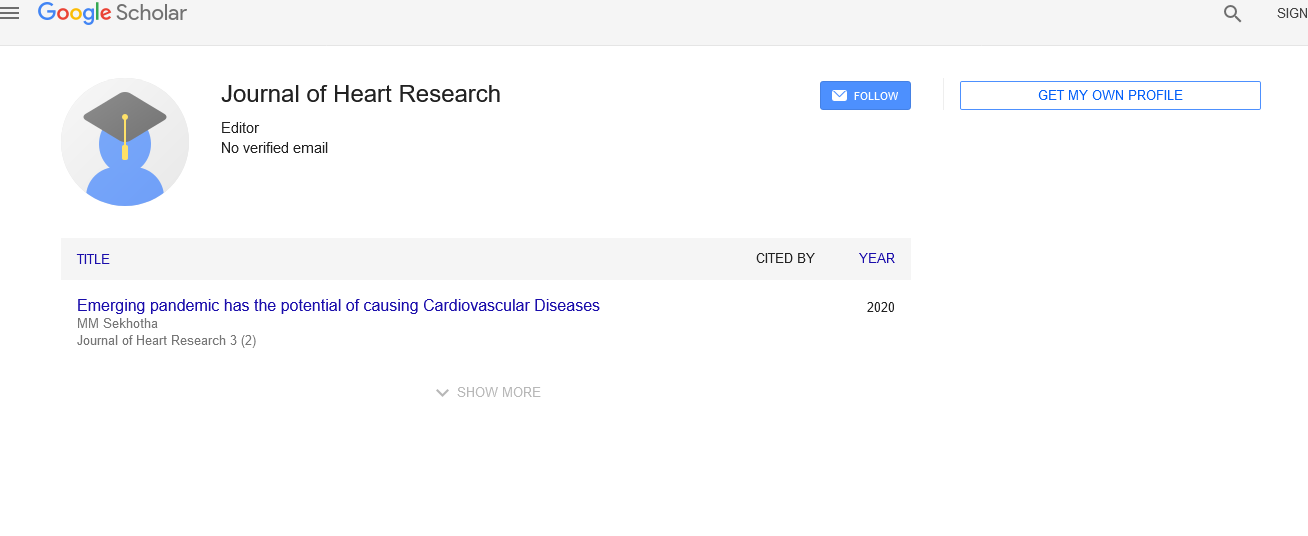An Overview on Hypertension
Received: 03-Dec-2021 Accepted Date: Dec 17, 2021; Published: 24-Dec-2021, DOI: 10.37532/ puljhr.2022
This open-access article is distributed under the terms of the Creative Commons Attribution Non-Commercial License (CC BY-NC) (http://creativecommons.org/licenses/by-nc/4.0/), which permits reuse, distribution and reproduction of the article, provided that the original work is properly cited and the reuse is restricted to noncommercial purposes. For commercial reuse, contact reprints@pulsus.com
Commentary
Hypertension otherwise called hypertension(HT), is a drawn out ailment where the circulatory strain in the conduits is industriously raised. Hypertension generally doesn’t cause indications. Long haul hypertension, nonetheless, is a significant gamble factor for stroke, coronary supply route illness, cardiovascular breakdown, atrial fibrillation, fringe blood vessel infection, vision misfortune, persistent kidney sickness, and dementia.
Hypertension is delegated essential (fundamental) hypertension or auxiliary hypertension. Around 90-95% of cases are essential, characterized as hypertension because of vague way of life and hereditary elements. Way of life factors that increment the gamble remember overabundance salt for the eating regimen, abundance body weight, smoking, and liquor use. The leftover 5-10% of cases are arranged as auxiliary hypertension, characterized as hypertension because of a recognizable reason, like ongoing kidney infection, limiting of the kidney corridors, an endocrine issue, or the utilization of anticonception medication pills. Circulatory strain is ordered by two estimations, the systolic and diastolic tensions, which are the greatest and least tensions, individually. For most grown-ups, typical circulatory strain very still is inside the scope of 100-130 millimeters mercury (mmHg) systolic and 60-80 mmHg diastolic. For most grown-ups, hypertension is available assuming the resting pulse is steadily at or over 130/80 or 140/90 mmHg. Various numbers apply to kids. Walking pulse checking north of a 24-hour time frame shows up more exact than office-based circulatory strain estimation.
Way of life changes and prescriptions can bring down circulatory strain and abatement the gamble of unexpected issues. Way of life changes incorporate weight reduction, actual exercise, diminished salt admission, decreasing liquor consumption, and a sound eating routine. On the off chance that way of life changes are not adequate, then, at that point, pulse meds are utilized. Up to three drugs taken simultaneously can handle circulatory strain in 90% of individuals. The treatment of modestly high blood vessel circulatory strain (characterized as >160/100 mmHg) with prescriptions is related with a superior future. The impact of treatment of pulse between 130/80 mmHg and 160/100 mmHg is less clear, for certain surveys observing advantage and others finding hazy benefit. High circulatory strain influences somewhere in the range of 16 and 37% of the populace universally. In 2010 hypertension was accepted to have been a component in 18% of all passings (9.4 million worldwide).
Hypertension is seldom joined by indications, and its distinguishing proof is for the most part through screening, or while looking for medical services for an inconsequential issue. Certain individuals with hypertension report cerebral pains (especially at the rear of the head and toward the beginning of the day), as well as unsteadiness, dizziness, tinnitus (humming or murmuring in the ears), adjusted vision or swooning episodes. These side effects, be that as it may, may be connected with related uneasiness rather than the hypertension itself. On actual assessment, hypertension might be related with the presence of changes in the optic fundus seen by ophthalmoscopy. The seriousness of the progressions run of the mill of hypertensive retinopathy is evaluated from I to IV; grades I and II might be hard to separate. The seriousness of the retinopathy relates generally with the length or the seriousness of the hypertension.
Acknowledgement
None
Conflict of Interest
None





